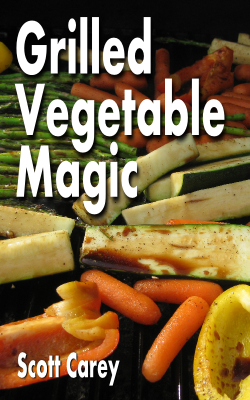A dutch oven must be seasoned before you use it. Some dutch ovens come with a protective wax coating that prevents rusting on the dutch oven while it is in shipping. It has to be removed before you can cook in the dutch oven.
A number of companies have figured out how to season their dutch ovens before they ship them and they don't have a wax coating. If you buy one of those dutch ovens, you won't need to season it before you use it.
The purpose of seasoning a dutch oven is to create a barrier between the iron in the dutch oven and moisture in the air so that they don't rust. It also provides non-stick coating on the oven that makes it easy to cook in. Over time, this coating will build up and becomes a very effective non-stick surface.
The seasoning process is simple, but does take some time. You'll need to plan on a couple of hours and, if you can't do it in a outside location, like in your grill, will cause a bit of smoke in your home.
Prepare the Dutch Oven
If the dutch oven has a wax coating, then the first thing you have to do is to remove that wax coating. You don't need it anymore. Use some steel wool, or a steel scratchy and some hot, soapy water to scrub all of the wax off, both inside and out. You may need to use some fine-grade sandpaper if you are trying to remove the rust.
If the dutch oven doesn't have a wax coating and you are re-seasoning it, you'll need to use some steel wool to scrub all of the rust or burnt on food off of the dutch oven.
After you have removed the wax or rust and have the dutch oven down to bare metal ,rinse the dutch oven off in clear water. Note that you won't wash the oven with soap again, unless you are re-seasoning it.
Dry the dutch oven with a towel and let it air dry.
Heat and Oil
The next step is to do several iterations of heating the dutch oven up and then applying a coating of oil or shortening. You'll need to either use the oven in your house, or you can use your grill if your dutch oven will fit in it.
Preheat your oven or grill to about 350 degrees. If you are doing the seasoning in your oven, putting a cookie sheet underneath the dutch oven will help reduce the smoke. Cover the cookie sheet with foil to reduce the cleanup you have to do.
You'll need to season the dutch oven lid as well, so one way is to turn the dutch oven upside down, and rest the lid on the legs of the dutch oven, which are now pointing up.
Let the dutch oven heat at 350 degrees until it is just long enough so that it is barely too hot to handle. Now take it out and use a paper towel to apply a thin coat of shortening (just plain shortening, not the buttery kind). You don't need a ton--a thin coat will do. Make sure that you cover every part of all the surfaces, inside and out, the kettle and the lid.
Put the dutch oven back into the oven or grill. It helps if you put it upside down so that the melted shortening doesn't pool. Bake the dutch oven for 45 minutes. Then turn off the oven or grill and let the dutch oven cool for 15 minutes.
It's important that you let it cool slowly. Don't try to speed up the cooling by putting the dutch oven in cold water, the freezer, a snowbank, or anything like that. You'll just end up with a warped or cracked dutch oven that will be of no use to you.
After 15 minutes, remove the dutch oven (it will still be quite warm). Turn the oven back on to 350. Apply another coating of shortening to the dutch oven and return it to the oven. Bake for 45 minutes, then turn the oven off again and let it cool for 15 minutes. Remove the dutch oven and apply one more coat and then let the dutch oven cool completely. You will have put shortening on the dutch oven a total of three times.
After it cools completely, use a paper towel to wipe out any of the melted shortening that is left.
Your dutch oven is now seasoned and ready to use!
For the first few times, it will help the seasoning if you cook something greasy in it, like bacon. Dutch Oven Mountain Man Hash is perfect for that.
Avoid any dishes that are heavy with tomato products (like spaghetti sauce) or sugar (like a dessert). The acid in the tomato products and the sugar can eat into the seasoning, so wait a few times before you try those types of dishes.
You only need to do this seasoning once, unless you neglect your dutch oven and need to re-season. In that case, you'll need to do the whole process over again.
Each time you use your dutch oven, you can strengthen the seasoning, by heating the dutch oven and applying another thin coat of shortening to your dutch oven. You can do this on top of your stove or grill.
Simply heat the dutch oven until it is quite warm, all the way through. This drives any moisture out that is left over from washing.
Reapply a thin coat of shortening, just like when you originally seasoned it. After the shortening melts, wipe the dutch oven out and store it for the next time you cook with your dutch oven.
Take care of your dutch oven like this and it will last you forever.
Next time we'll talk about how to cook with your dutch oven right in your backyard.
See below for all the articles in this series on Getting Started with Dutch Oven Cooking:
- Getting Started with Dutch Oven Cooking - What to Look For in a Dutch Oven
- Getting Started with Dutch Oven Cooking - Buying a Dutch Oven
- Getting Started with Dutch Oven Cooking - Seasoning a Dutch Oven
- Getting Started with Dutch Oven Cooking - Where to Cook With a Dutch Oven
- Getting Started with Dutch Oven Cooking - Cooking with a Dutch Oven
- Getting Started with Dutch Oven Cooking - Dutch Oven Accessories
- Getting Started with Dutch Oven Cooking - Easy Dutch Oven Recipes
- Getting Started with Dutch Oven Cooking - Cleaning a Dutch Oven
- Getting Started with Dutch Oven Cooking - Dutch Oven Cookbooks
- Getting Started with Dutch Oven Cooking - Online Dutch Oven Resources
Be sure to sign up for the Outdoor Cooking Magic Newsletter to be notified when the next article is ready!
And if you have any suggestions or comments on seasoning a dutch oven, please share those with us in the comments below.




Recent Comments